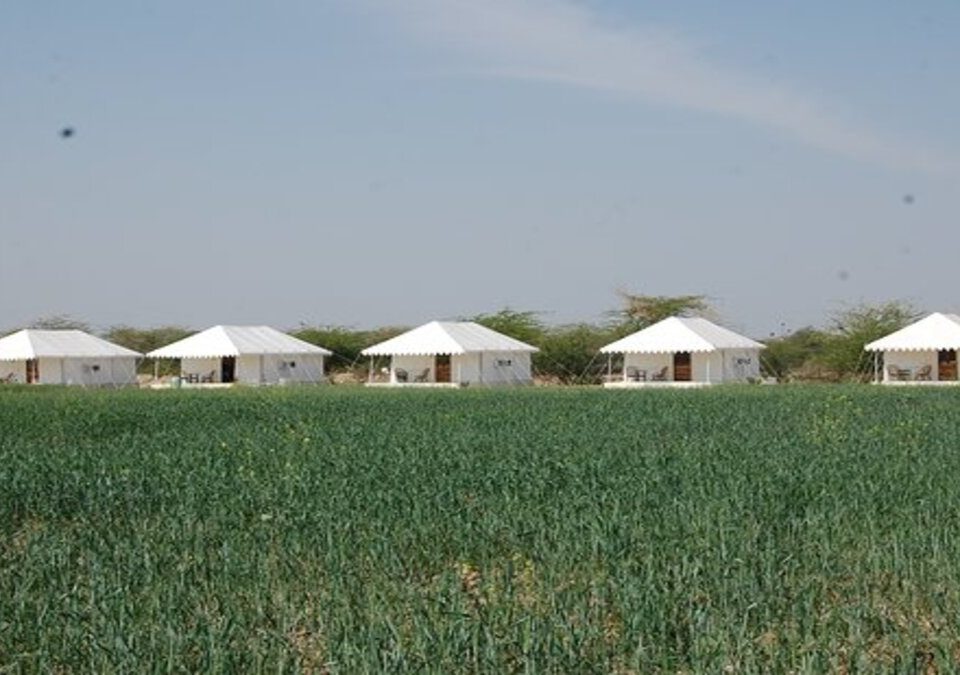- Welcome to Ancient India Hospitality
- +91-9772027493
- +91-9929596389
- info@ancientindiahospitality.com

The Top Luxury Resorts in Jodhpur: Live Like Royalty
July 27, 2023The Blue City – Jodhpur (A Desert Kingdom)


Getaway To One Of The Best Tourist Destinations
The remarkable blue structures of Jodhpur, which are surrounded by a massive fortification wall with bastions, contrast dramatically and exquisitely with the nearby Thar Desert. You may keep yourself occupied and in awe of the city's ancient magnificence by exploring the palaces, forts, and temples. Beautiful fabrics, embroidered leather products, lacquerware, antiques, rugs, puppets, and sculptures are all available during bazaars. Jodhpur is a well-liked tourist attraction and a practical starting point for exploring the area.
The Exciting Concoction of the Contemporary and the Conventional
Jodhpur dates back to 1459 AD when it first appeared. The Rathore family has played a significant role in the development of this wealthy metropolis. The founding of Jodhpur in India is attributed to Rao Jodha, the leader of the Rathore Clan. It is known that the city was constructed at the location of the state of Manwar's former capital, Mandore. Consequently, the residents of Jodhpur and the surrounding territories are referred to as Marwaris.
Landmarks And Location In Jodhpur To Visit And Discover
FORTS
- The Mehrangarh
- Khejarla
- Umaid Bhawan Palace
- Moti Mahal
- Sheesh Mahal
- Phool Mahal
Rising Perpendicularly atop 125 meters above Jodhpur’s city with all its divinity. The Mehrangarh fort, which is chiseled and strong, is renowned for its fine latticed windows, carved panels, ornately adorned windows, and the Moti Mahal, Phool Mahal, and Sheesh Mahal walls.
The 400-year-old Khejarla Fort is nestled in a remote area 85 kilometers from the major metropolis. Rajput architecture is evident in the magnificent red sandstone structure, which is currently a hotel. The scenic surroundings, latticework friezes, and ornate Jharokas of the fort will mesmerize visitors.
Built in year 1929 responding to a famine that had struck the state. The Umaid Bhawan Palace got its name from Maharaja Umaid Singh of the Jodhpur kingdom. Ht constriction of the palace took 16 years to and was designed by renowned British architect HV Lanchester. The palace's architecture is a fusion of Indo-Saracenic, Traditional Revival, and Western Art Deco styles and was constructed using sandstone and marble.
The Pearl Hall known as Moti Mahal is where the royal family had their audiences.
The Sheesh Mahal, sometimes referred to as the Glass Palace of Jodhpur, is located inside the grounds of Mehrangarh Fort.
The Flower Hall famously called Phool Mahal, is surely the most opulent structure in the palace that got its name.
Temples, Lakes, Museum
|
Chamunda Mataji Temple |
Ranisar Padamsar |
|
Jodhpur Goverment Museum |
Jaswant Thada |
|
Ghanta Garh |
Mahmandir Temple |
|
Manadleshwar Temple |
Sardar Samand Lake & Palace |
|
Masuria Hills |
Shastri Circle |
|
Mandore |
Kailana Lake |
|
Machiya Safari Park |
Somnath Temple |
|
Balsamand Lake |
Guda Village |
|
Mehrangarh Fort & Museum |
Chokhelao Bagh And Interpretation Center |
Adventurous & Comfortable Accommodation - Your Ideal Stay Close to Nature
tucked away in the base of the JAWAI hills in the Rajasthani hamlet of Bera, close to Sumerpur and the jawai Dam. Jawai Bera Leopard Camp is the epitome of pure comfort and resplendent luxury, with just seven tents and one cottage, each with space and privacy, made of canvas with a PVC roof, steel, and leather, and lavishly finished with contemporary Cain furniture, hand-crafted Indian artifacts, and rain showers. It was exquisitely designed to replicate the captivating ways of nature. Views of the highlands are inspirational from our chic tent and cabin.
Around the bera town lies the lovely Jawai Bera Leopard Camp. At Jawai Bera Leopard Camp, spend unforgettable days exploring the forest in search of leopards and other animals. And in terms of amenities and services, The Jawai Bera Leopard Camp has done all possible to provide all visitors with first-rate service.

